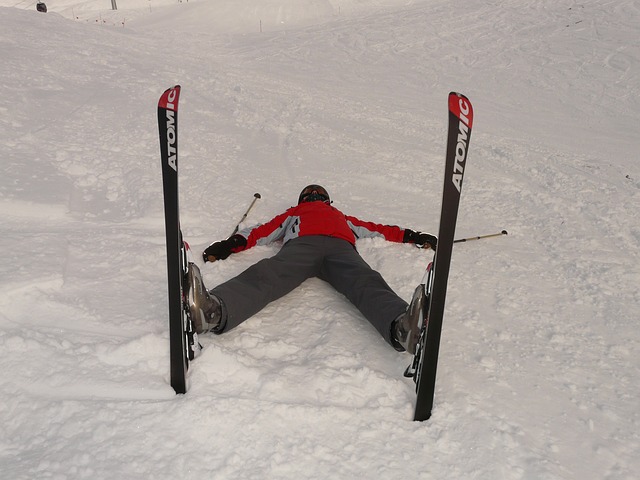This blog post is part of a series of reflections on the Coronavirus / Covid-19 crisis and the immediate transition from my face-to-face courses to online classes.

do what I say
Beware: long blog post. This article started from the following idea: in previous posts, I made up a list of rules and tips as I went along. In the religious register, we could talk about 10 commandments of online teaching. But in Matthew 22:35-40, a doctor of the law asks Jesus which is the greatest commandment. So could we make it boil down to one, generic observation that would encompass all commandments? This is what I tried to do in this reflection, and I came up with the following idea: an online course will exacerbate and amplify the characteristics of a face-to-face course. It will go higher, farther, stronger, to quote Gaston de Coubertin, or – to be more realistic – online means more limited, less interactive, more exhausting.
Starting mid-March 2020, ESCP business school decided to close its Paris campus, both for students and professors. In the space of a weekend, all face-to-face classes were to switch immediately to a 100% online format. Faced with this unprecedented situation, each professor was confronted with an alternative: either try to transpose in an online format the exact equivalent of what was happening in the classroom; or assume that everything had to be reinvented, since an online course is delivered through a totally different medium, with different constraints. We can take two analogies to illustrate this alternative.

The author of these lines is old enough to have lived through military service in France, and during the days spent in the field of operations, each soldier received a survival ration. Thus, in the wild, the soldier would take out from his package a cardboard box containing the equivalent of an airplane meal tray. It would be a mistake to compare the quality of this survival ration to a « normal » meal, e.g. one that could be eaten at a restaurant or at home. Indeed, in military life, one was either on the field of operations with survival rations, or hosted at the barracks with meals in the canteen. A good point of comparison is thus to assess to what extent the survival ration is equivalent to a meal in the privates’ canteen (and not the officers’ mess!). The survival ration was indeed a replicate of a military canteen meal, under the constraints of the field in the wild: no possibility of heating, with limitations to weight and size… As a result, the quality had been degraded in this process, but the result still remained in the category of a military meal. This is the same for pivoting abruptly to online teaching. We are in a situation where we tried to replicate an experience while taking into account the new constraints of the environment, therefore degrading the product.

In contrast, let’s take a second illustration. The author of these lines is old enough to have known a world before e-mail. A long time ago, people from the Mailing Room would show up every morning at our desk to deliver letters in paper format. We would read it, write the reply or have it typed by our secretary, and the reply would be put in an envelope a few days later and sent by post. When e-mail arrived in France, the majority of users mistakenly thought that it was just a change of format: from a paper letter, we switched to an electronic mail. In fact, this led to a lot of deviant behaviour, because the reality was way more complex. Indeed, we were confronted with a completely new mode of communication that should have invented its own rules instead of copying the rules of paper mail by analogy. If this step had been done, perhaps e-mail would be much more effective in the functioning of organizations as of today. These 2 illustrations can be applied to the switch to online courses. First, there was urgency. The idea of survival ration sets the tone: how to get by in the jungle, all on your own, i.e. deprived of all the usual logistics of barracks and headquarters? Should we opt for a strategy to try and copycat the face-to-face experience – with an imperfect result for sure – or try to reinvent the whole course in this new format – a time-consuming strategy, to say the least. After 2 months of practicing online courses, we can establish a comparison with face-to-face courses, and the differences between both modalities can be summed up in a single generic idea: an online course exacerbates and amplifies the characteristics of a face-to-face course. Let’s unroll those comparisons in the remainder of this article.
Before the class – preparation
The ratio of invisible hours to visible hours

In a typical face-to-face course, we know there is preparation: the professor adapts the structure of the session, prepares documentation and exercises, and reviews the major concepts that he or she wishes to convey both in substance and in form. But in addition to these hours of “classical” preparation, online teaching requires additional hours. Indeed, if one decides to do his or her lecture exactly as he or she used to do in the classroom, the outcome is bound to have a degraded quality: some actions are impossible to perform, such as moving closer to some students; other actions are possible, but with much less fluidity, such as grabbing a marker and writing key words or a diagram on the board. In order to obtain the same results, it is then necessary to plan alternative ways, i.e. search for numerical tools, train and practice with those tools, and design teaching sequences that are specific to the online course. This additional time corresponds to invisible hours: in fact, the only hours visible to the students are the class hours (face-to-face or online), while the hours of preparation are invisible to them. But in the case of an online course, this ratio will be exacerbated. Indeed, for a face-to-face course, let’s assume that it takes one hour of preparation to provide 3 hours of class time; the same course, if done online, will instead require between 3 and 10 hours of preparation for those same 3 hours of class time. The ratio of invisible hours to visible hours is therefore multiplied by 3 to 10 when going online. Those numbers might vary, but the online class will always require much more invisible hours to invest in.
The question of quality
All this extra preparation does not even guarantee that the course will have the same level of quality. The metrics we propose here are much more intuitive than measured, but they give an order of magnitude: if a professor decided to do her online course exactly the way she used to do her face-to-face course, she would probably have a course quality degraded by 40% when compared to the face-to-face experience. In other words, the quality of the online course would be at 60% of the quality of the face-to-face course. For sure, hours of preparation dedicated specifically to the online course will help reduce this gap in quality, but in our experience, they will not cancel it completely. In fact, according to our estimate, the 3 to 10 hours of digital preparation that we mentioned will bring the quality of the online course from 60% to 80-90% of the quality of the face-to-face course. To reach an equivalent level of quality (100%), we would have to invest a lot of extra time on top, or decide that we don’t want to make a clone of the face-to-face class: the online course then becomes another product, another promise, another experience…
During the class
Interacting with black screens

One point should be made clear from the outset: in all the online courses we delivered, the students not only muted their microphones (at our request, to avoid background noise), but they also turned off their cameras. In spite of several strategies (e.g. asking to start the class with a round of greetings where each student in turn switches on their camera and microphone to say hello), the students kept their cameras off during whole classes[1]. Even though the professor reminded them that they had 3 ways to react and participate (click on « raise your hand », type in the chat, activate the microphone), the interaction was much weaker than in the classroom. Indeed, in a classroom, a student who does not wish to participate knows some tricks very well: he will keep his eyes down when a question is asked or she will wait for the teacher to focus on some students who point out themselves by their micro movements (nodding, chatting, direct look…). In the case of an online course, each student feels protected by his black screen: he is doubly at a distance – physical distance for sure, but also distant from the senses, since he is literally invisible to the teacher’s eyes…
Transmitting and receiving signals: an energy issue
Those black screens point to our first observation: pivoting to an online course encourages more pure lecturing. As an example, if in face-to-face class, a professor’s performance is a mix of 60% lectures (the professor talks and answers questions) and 40% animations / exercises / discussions, then it is likely that switching to an online course will increase the lecturing part (in our example, from 60% to 80% maybe more), simply because the animation part will be much harder to maintain – because of technical issues for a part, but also because of lower student participation.

Another related problem is interaction fatigue. Anyone who has ever taught knows that this activity takes a toll on energy on 3 levels at least: physical energy; mental energy; nervous / emotional energy. This can be partly compensated by energizers: a good atmosphere in a group of students, a successful interaction, stimulating exchanges, all this helps to recharge the professor’s energy battery. If we do now the comparison, we will realize that in an online course, energy drainers will be exacerbated while energizers will be more limited than in face-to-face interaction. Indeed, in a classroom, the professor relies on a multitude of senses: she uses the visual, auditory and kinesthetic channels simultaneously, and she feeds off all these signals to direct the rhythm and allocate her energy. All our colleagues know this: we professors have a form of 6th sense that allows us to detect a drop in attention, increasing boredom, or even realize that we are losing control over what is happening in the classroom… By contrast, when we are in an online course, faced with black screens, we lose a very large part, if not all, of this ability. In addition, even if the students switched their cameras on, this problem would probably not be solved: our mirror neurons feed on all the micro-expressions on the students’ faces, and even though this is done unconsciously, it participates globally in our reception of messages and signals. During a communication by camera, we lose a very large part of these micro signals. Our brain will then try to compensate frantically for this lack of information that it is used to in real life. During this confinement, how many times have we heard colleagues say that a day of videoconferencing meetings tires them much more than a day of face-to-face meetings? Well, the exact same thing happens for an online course…
What about fluidity?

When we are in a classroom, we are used to doing things in an extremely fluid way: starting to answer a student’s question while walking to the whiteboard, grabbing a felt tip pen, starting to draw while talking, grabbing the eraser then rewriting, while at the time, from the corner of our eyes, we check that the student and his classmates are following our reasoning. In comparison, the same sequence in an online course will require juggling different tools, clicking on icons or activating keyboard shortcuts (that we had to memorize), and the fluidity will never be the same as in a classroom. Another disrupter of fluidity is alerts and notifications: in a classroom, when a student raises his hand, he usually does it silently and we automatically record this visual signal without stopping our presentation. Now, let’s imagine that during one of his lectures in the classroom, a professor had to check his e-mails – and answer them on the fly! Each time a new email arrives, an alert sounds, forcing the professor to read the email and then decide whether or not to answer it, while continuing to lecture. It is very likely that this professor would lose a lot of his concentration and thus, his fluidity. This is exactly what happens with online courses: we are explaining a concept by sharing the screen, and we hear a « ding » which means that either a student has raised her hand or someone has posted a message on the chat. In our brain, the « lecturing » zone must go on while the « reading » zone reads the message and the « decision » zone selects the answer to adopt: ignore, process later, answer now… No wonder that the brain can be overwhelmed.
Technology, savior or burden?
In a conventional classroom, technical problems have recurring characteristics. Firstly, these problems are limited to the equipment used: the computer, the video projector and possibly the microphone. Then, when a problem arises, we can rely on dedicated support services. Finally, we always have a plan B, or even a plan C: if our USB key doesn’t work, we can retrieve slides from the cloud; if we really can’t access our slides, we can tell students to follow the class on their paper handouts; in the worst case, we can even improvise a class using only the whiteboard and felt tip pen. In comparison, in an online course, technical problems will be exacerbated alongside those 3 axes. Firstly, an online course generally uses many more tools than just a computer: the video capture platform with document sharing, a drawing software, an online survey application, not to mention shared documents for collaborative work… There is probably a computer law somewhere that postulates that the more tools you use, the greater the likelihood that a technical problem will arise: this is a simple common sense observation. When it comes to troubleshooting, the online professor will then be on his own. This means that the professor now has a double hat: in addition to his historical professor / researcher / animator hat, he now has to put on the outfit of Mario the digital plumber, with a necessity to be really swift, because everything happens live. This implies additional stress, since we are outside our area of expertise, but in the eyes of the participants, we are in charge of restoring good teaching conditions whenever a problem arises. This digital stress will be all the more amplified since there are very rarely plans B in case of technical problems: either the online tools work seamlessly, or we have to abandon a whole section of what was planned when some tools get dysfunctional. As a consequence, we lose a great deal of granularity in our response to technical problems online, and it becomes binary: fix it or lose it.
A modified relationship to time

In an online course, everything happens more slowly. When the professor asks a question, there is a lag before the question reaches the students (it can take several seconds), then the students have to think it and decide whether they want to answer; if so, then they have to type their answer in the chat or click on “raise your hand”; and once again, there is a time lag before these signals are transmitted to reach the professor’s computer. All in all, between the moment the teacher asks the question and the moment he gets a reaction from the audience, silence looms for a time that is doubled or tripled as compared to the same situation in face-to-face classes. Considering that, in real life, some colleagues already are uncomfortable at waiting for 10-15 seconds before students react, then what about the experience of an online course, when after one of our questions, we have to stare during 20-30 seconds at a black (and silent) screen, waiting for a signal from the Outback.
This warped time also triggers a new relationship to silence, exacerbated by the fact that we are like those blind fishes in the dark depths of the oceans, i.e. very limited in our perception. Let us illustrate that with a typical event: coming back after a break. In the real world, the professor announces a break, and gives a time to be back. When the time is over, she can actually see how many students are back to the classroom. In contrast, in an online course, we usually specify that students should not disconnect their computers, so at the end of the break, we find ourselves staring at those black, silent screens, not knowing whether the students are actually back. One solution is to make a chat call (“please type ‘back’ when you have returned to your computer”). At times, it really feels like we are in a Turing test: the remote correspondent answers us, but we’re not sure whether it is a human being or a chat-bot (i.e. an artificial intelligence programmed to respond to chat messages)!
Scripting, in order to control time and uncertainty

In the case of an online course, we need to do much more detailed scripting. Indeed, in a face-to-face class, we can rely on our competence as experts in our field, allowing for digressions and improvisations. In other words, we are like jazzmen, relying for a part on their sheet music, but also mastering our instrument so well that we can improvise an exercise on the fly, or set up a situation or an explanation that are contingent to whatever is happening in the room at that moment. Comparatively, and for all the reasons mentioned above, the online course will make us run many more risks when we try to improvise. Teaching online then becomes a strategy for managing – and in this case, minimizing – the risks of a failed experiment.
Here are some metrics that we have observed. In a face-to-face course, a 3-hour session is generally broken down into 3 to 5 parts, with elastic timing: nothing is really written down, it really depends on the interactions with the students, and the key priority is to finish on time, having dealt with all the parts that we had planned. In comparison, a 3-hour online course session is usually scripted with at least fifteen different sequences: instructions on the online tools that will be used, round table to greet each other, a first survey to test the level of knowledge of a concept, then lecture on a concept with 3-4 shared slides, then work in small groups for 10 minutes followed by a collective debriefing, etc. In fact, the same happens in the real world: if an observer were present during a face-to-face class, she would probably identify between 15 and 30 distinct sequences in the 3 hours of the class. But the major difference lies in the scripting: in real life, sequences just happen, some of them being improvised on the fly, whereas in an online course, sequences have to be neatly planned and prepared, with the associated tools (survey application, shared documents, links to videos…), and this requires a much more detailed written script.
We can conclude on a positive note: of course, online courses will exacerbate the characteristics of the classroom courses, but this exacerbation does not always go in a negative direction. Co-teaching, for example, leads to a positive amplification in an online course. Co-teaching in a face-to-face course represents a very pleasant moment of sharing between colleagues, but when it comes to online teaching, doing the course together with a colleague will definitely change a lot of things for the better: we can literally unload some of our burden on our colleague for certain parts of the course; it allows us to work in parallel on side issues (answering the chat, preparing a survey), and students benefit from a live broadcast of the discussion between 2 experts, a bit like when attending a TV show. Not only is it an enriched experience, but it is also an opportunity to consume much less energy than being alone in front of the screen.
After class

Once a class is over, there are usually many things to do. As for face-to-face courses, this means answering questions by e-mail, posting additional documents or even writing clarifications and guidelines. In the case of online courses, there are at least 2 additional elements that will add service time. First, it will be necessary to retrieve and format the fruit of the students’ work online: whether it is the results of surveys, contributions made in collaborative documents or the structuring of ideas made by the teacher in the form of a mind maps, all the elements that have been produced live during the class must be retrieved, formatted, and delivered electronically to the students. Comparatively speaking, in a face-to-face class, each student is responsible for the notes he decides to take (or not to take), and the professor is not a notes provider. In other words, for a face-to-face class, the professor only needs to write a PowerPoint presentation before the course; in an online course, the professor will need to write two PowerPoint presentations: one before the course, and one after the course. The second service element specific to the online course has to do with time, in the form of asynchronicity. Indeed, while many students will attend the online course live (synchronous), other students can choose to view the recorded video of the course. Some may do this the day after the live session, others may take a week or more before logging in and watching the course. This means that service requests (questions, clarifications…) will take a longer period of time, depending on when the student actually watched the course video.

Conclusion
We started this article on a tensional question: should we strive to make an online course as a carbon copy of its face-to-face equivalent, or should we instead shift the frame of reference, considering that the online course is a separate product with different codes and expectations? In short, identical twins or siblings? Our angle of analysis has been to show that, from experience, online courses tend to increase / exaggerate / amplify the problems of face-to-face courses. In our opinion, those are really two different mediums that no longer need to be compared point by point, but rather appreciated in their differences. The face-to-face class is similar to a theater play (for lecturing) or a board game (for animation / discussion / experience). The online course finds its analogies rather in a radio show (for lecturing) or in a music festival like Woodstock: the precise planning is decided in advance, the timing is rigorous… and even if we don’t know exactly which technical problems will arise or which pieces the different musicians will play, the performance will be recorded and preserved. After theatre (the 3rd art), rhetoric (the 5th art) or cinema (7th art), will the online courses also become an art in their own right?
[1] Interestingly enough, when the students were sent in small groups to « private rooms », they would switch their cameras on for each other – and they would switch them off again when regrouped in the whole class.
